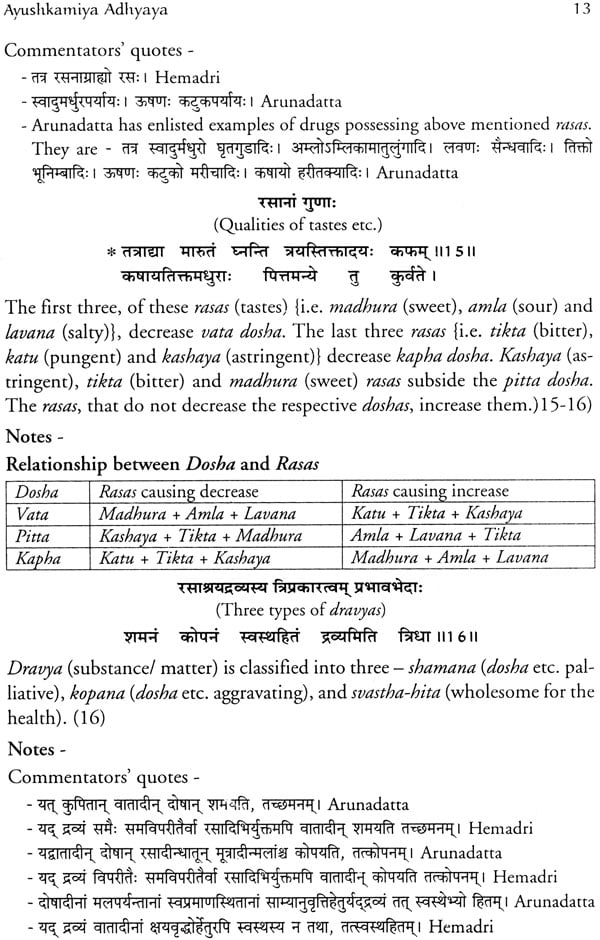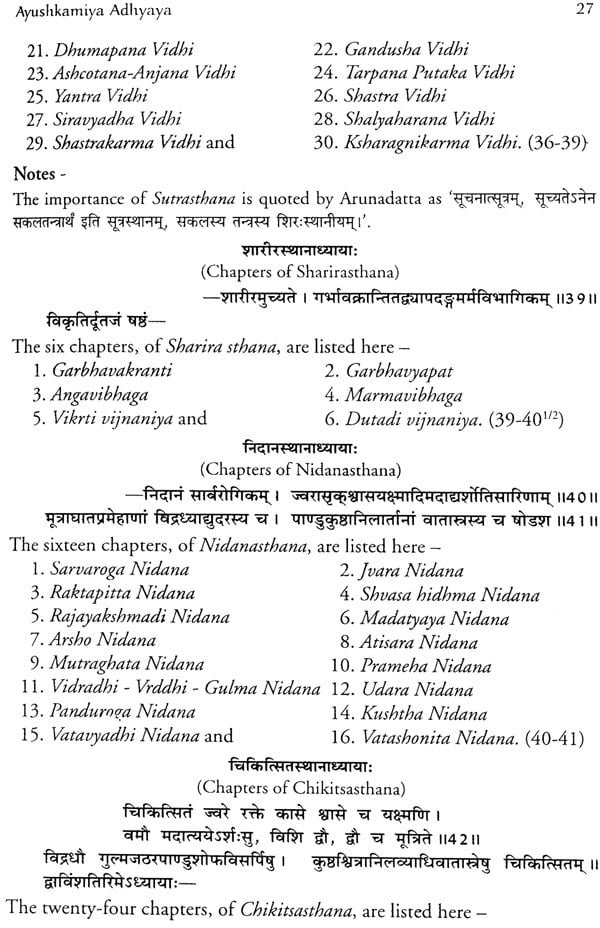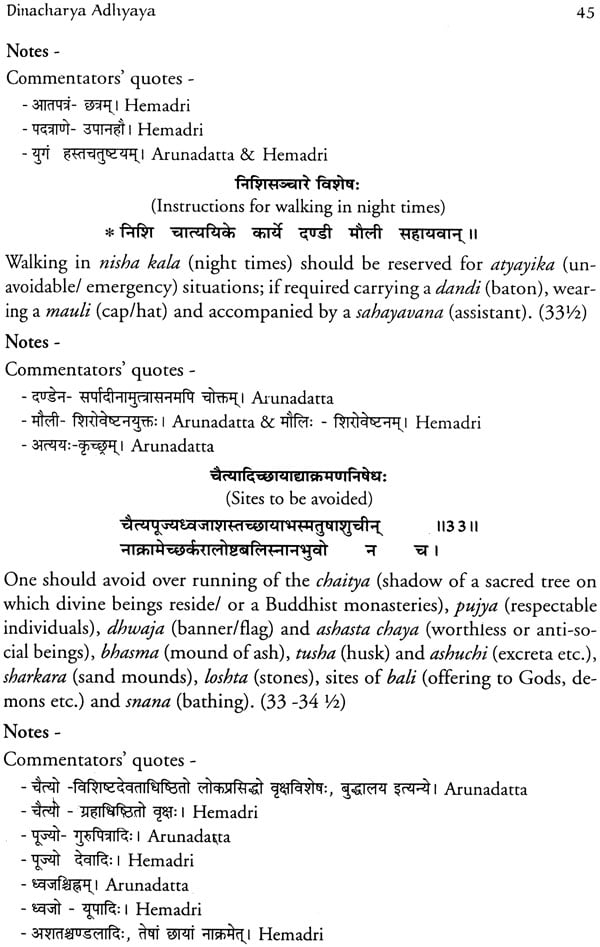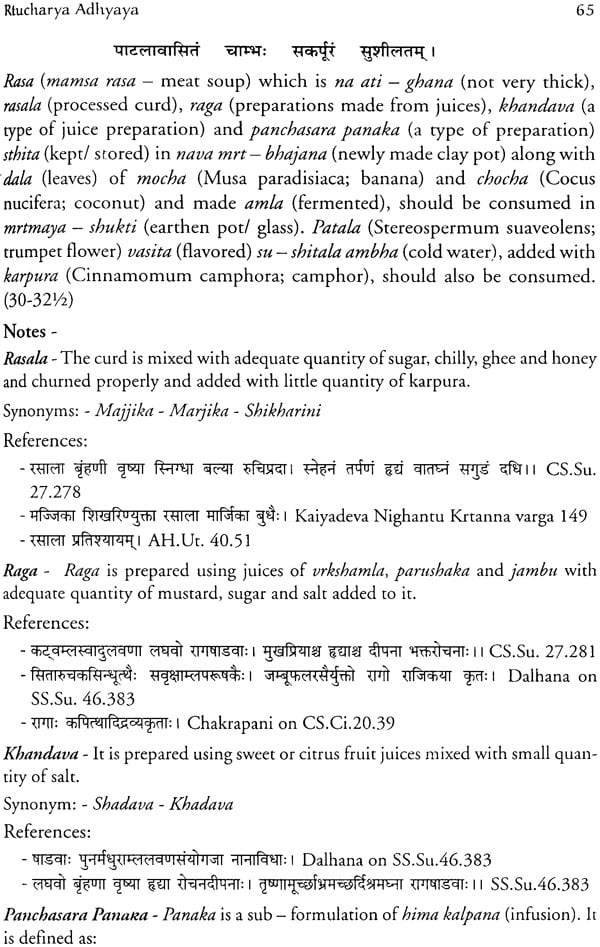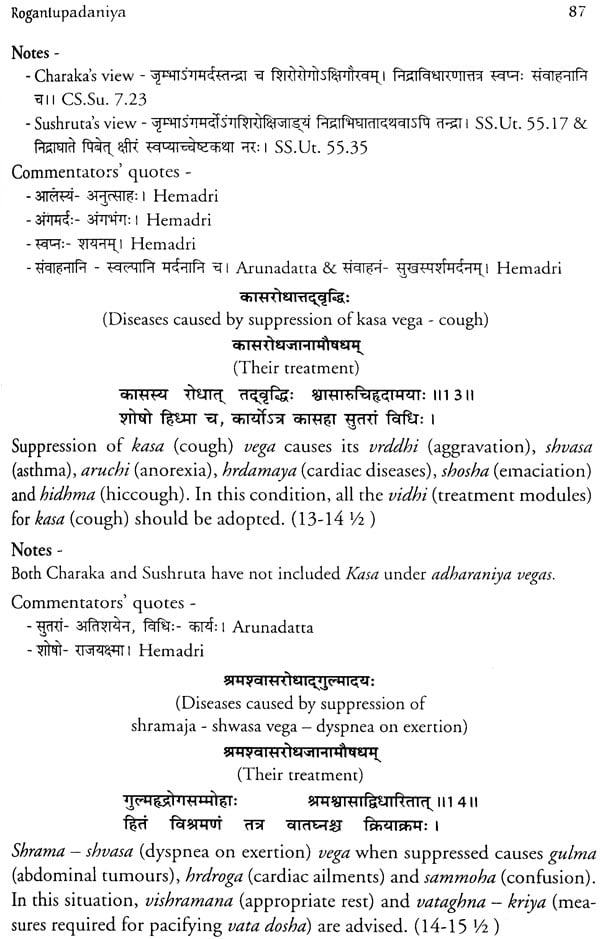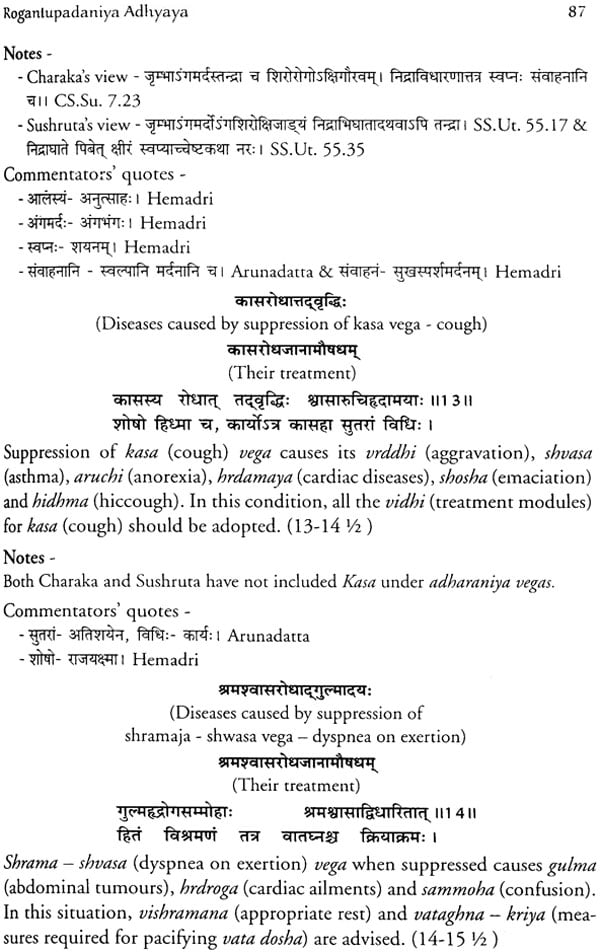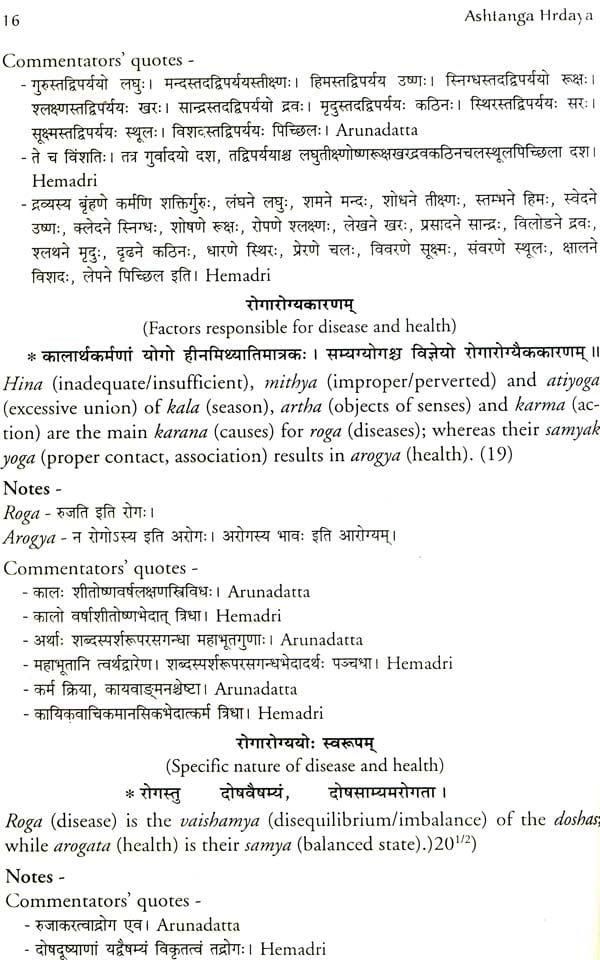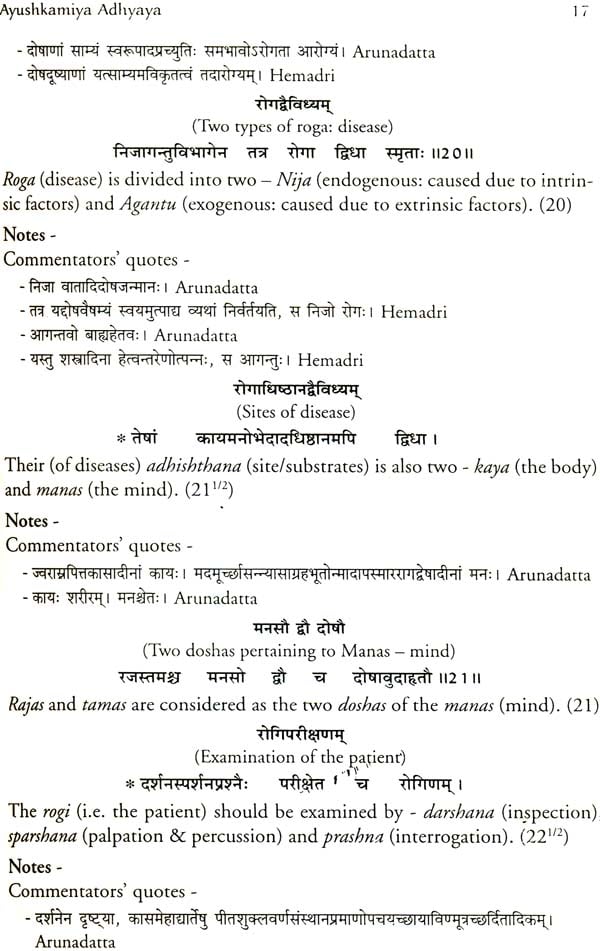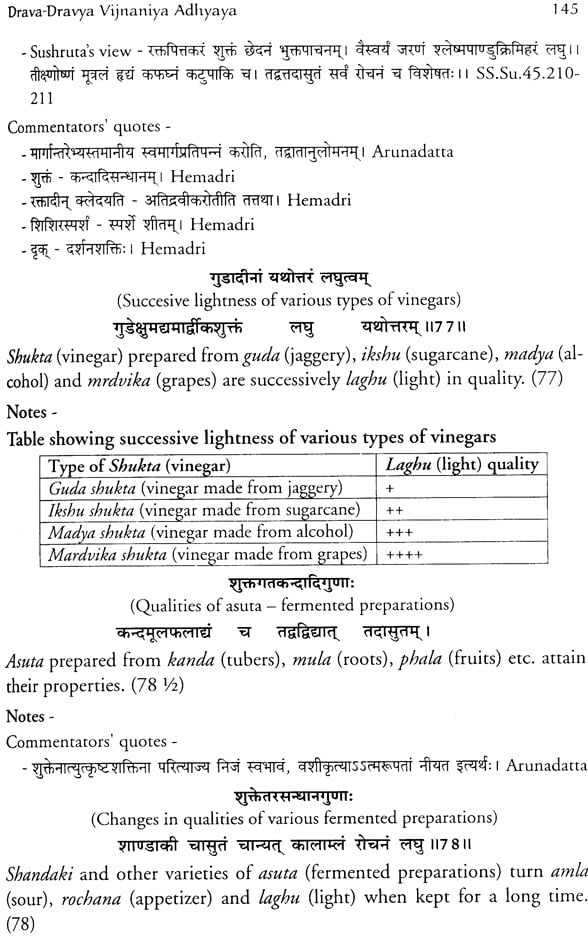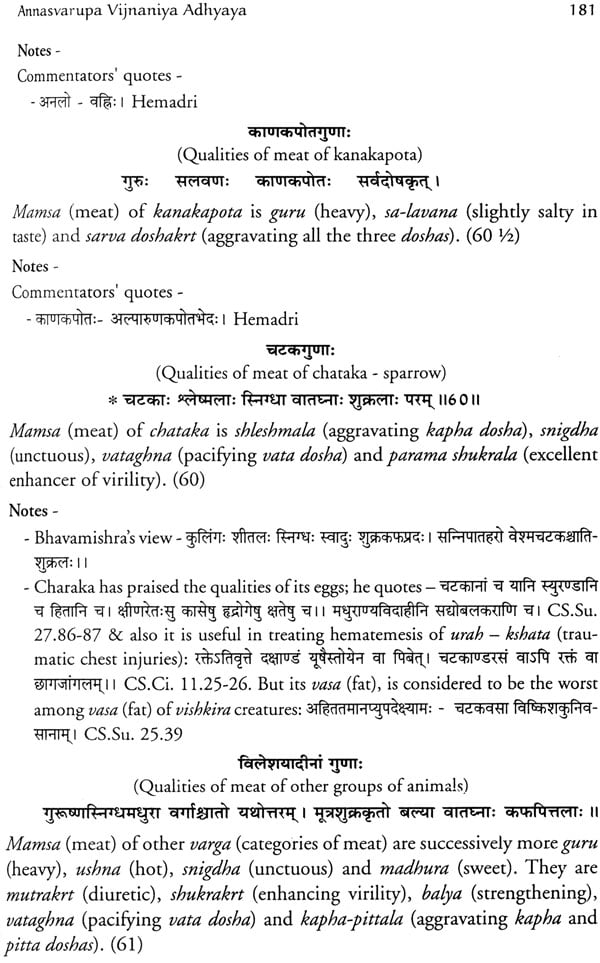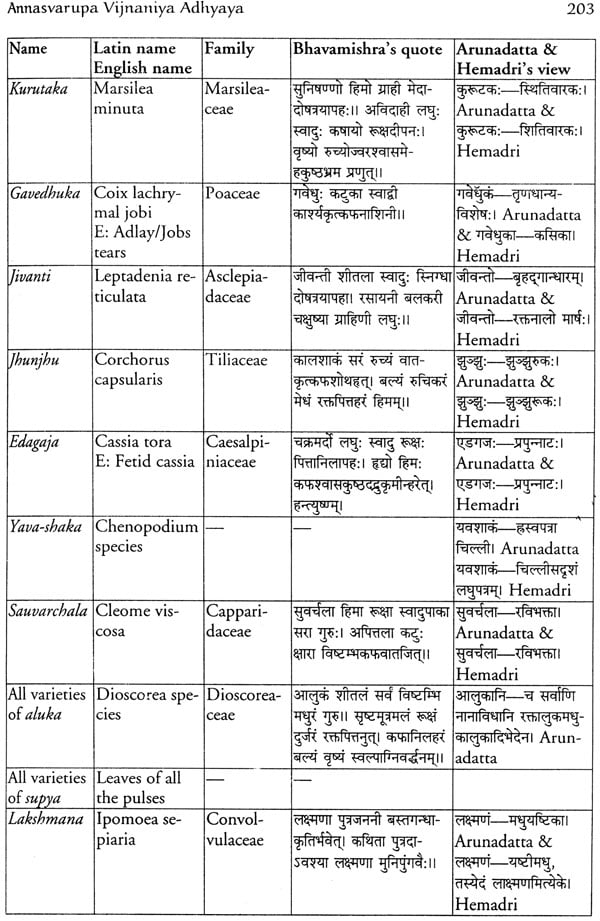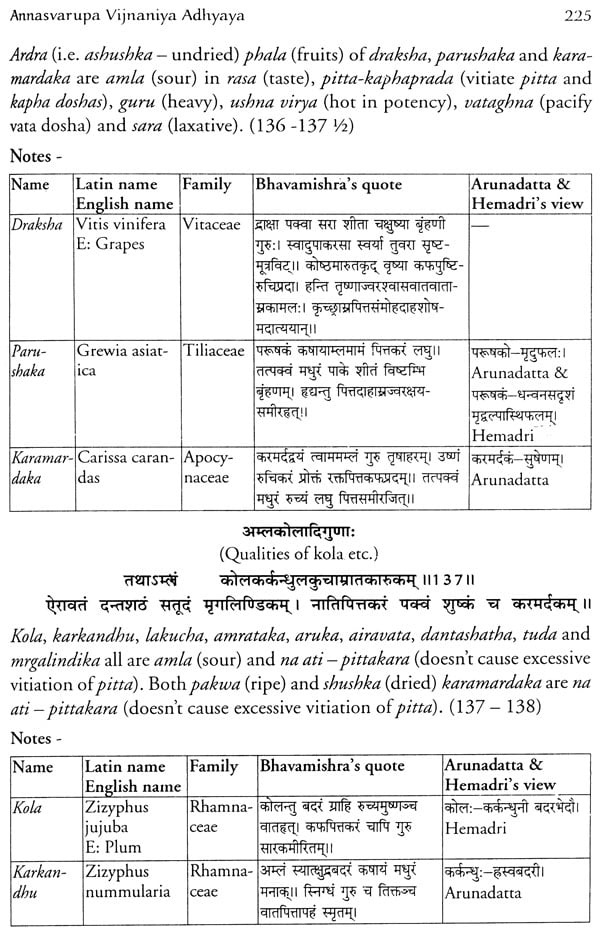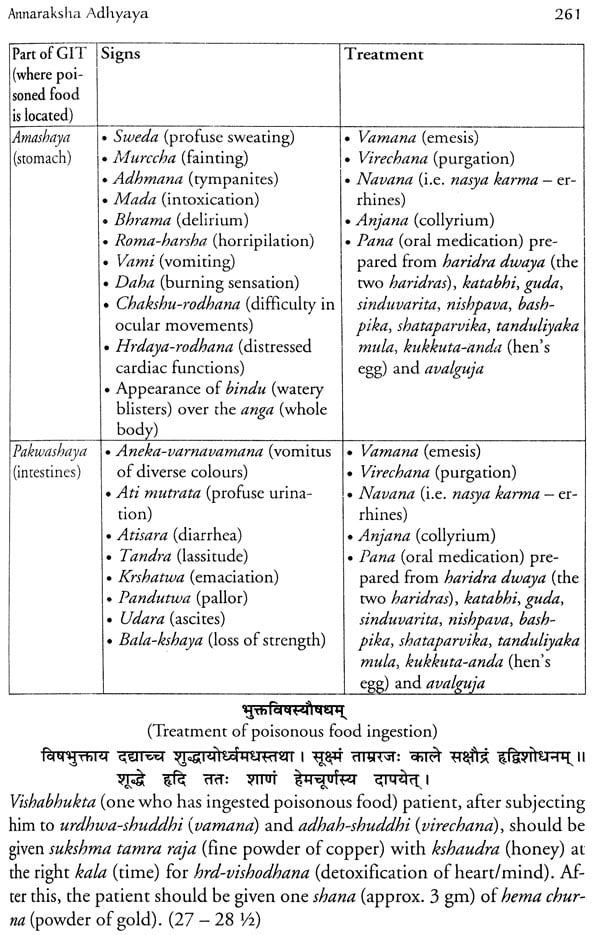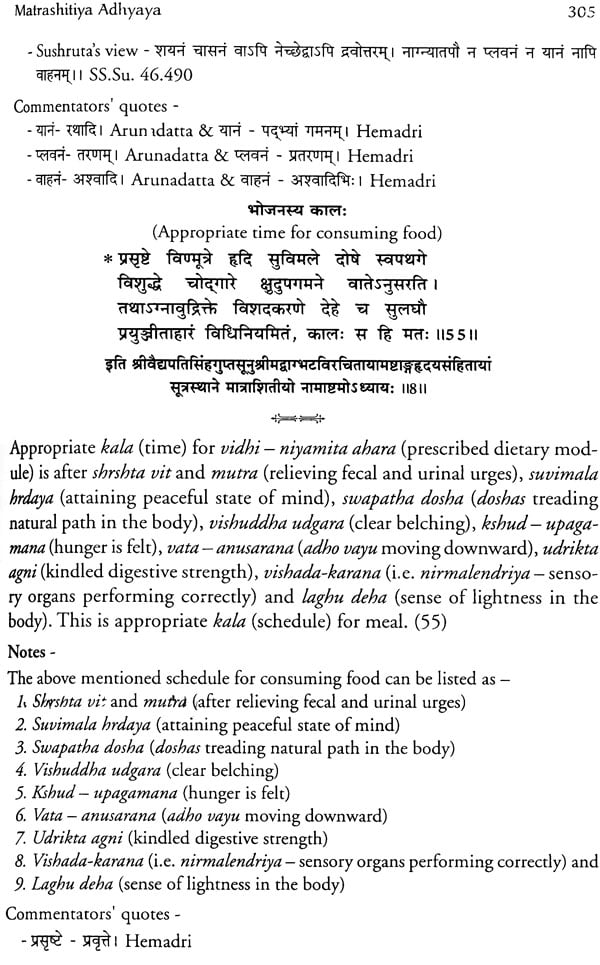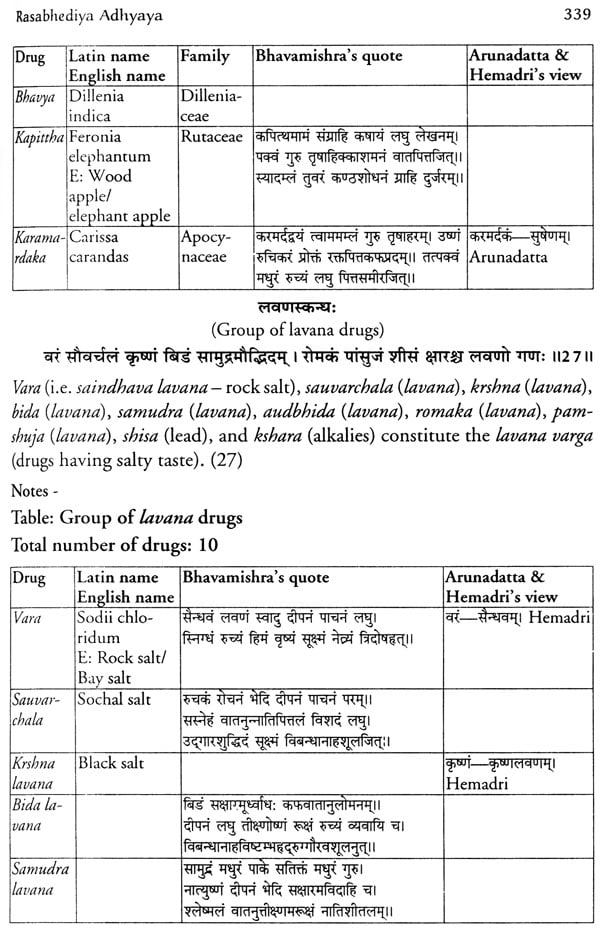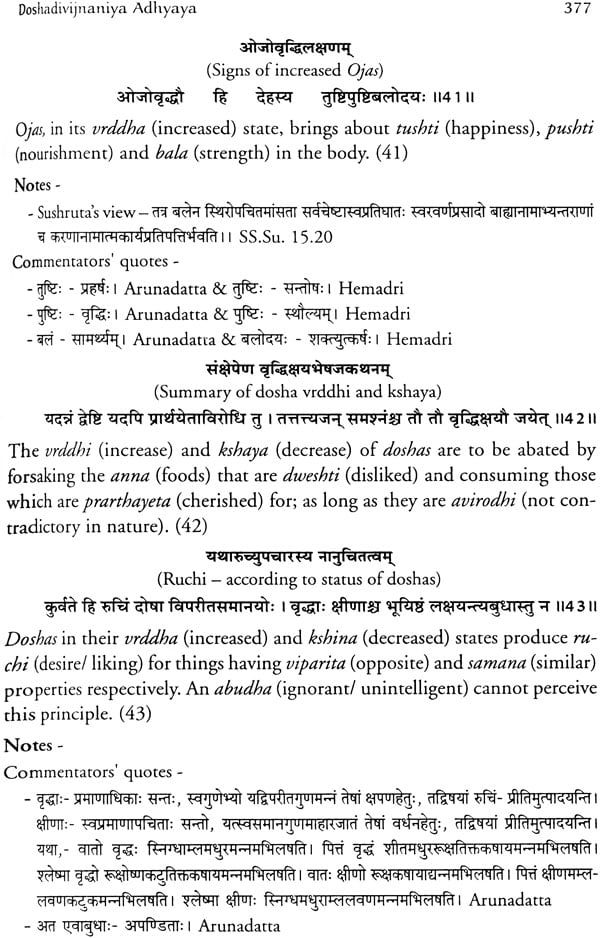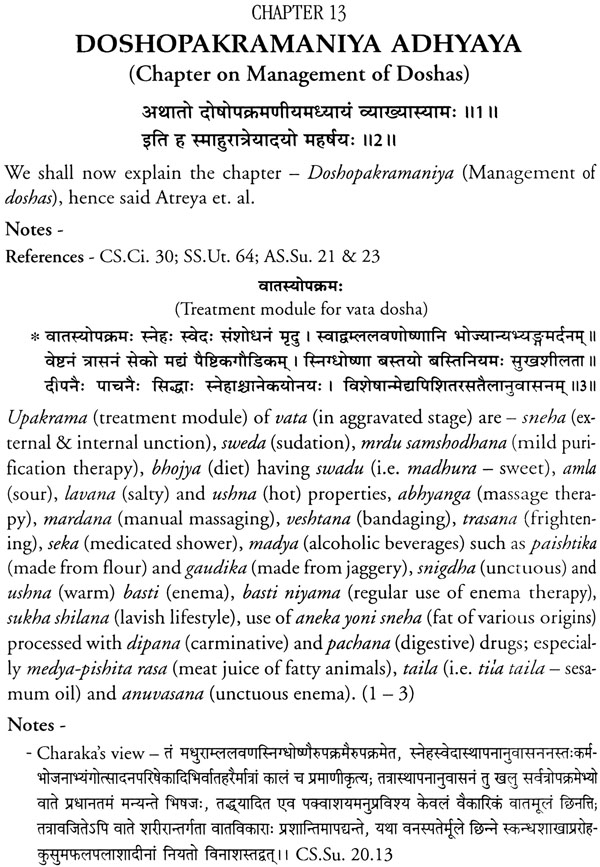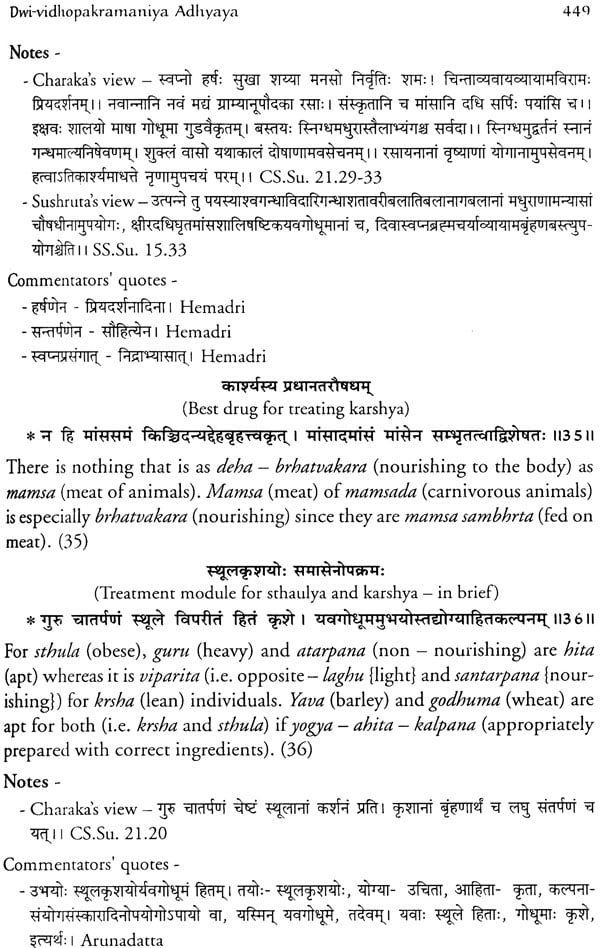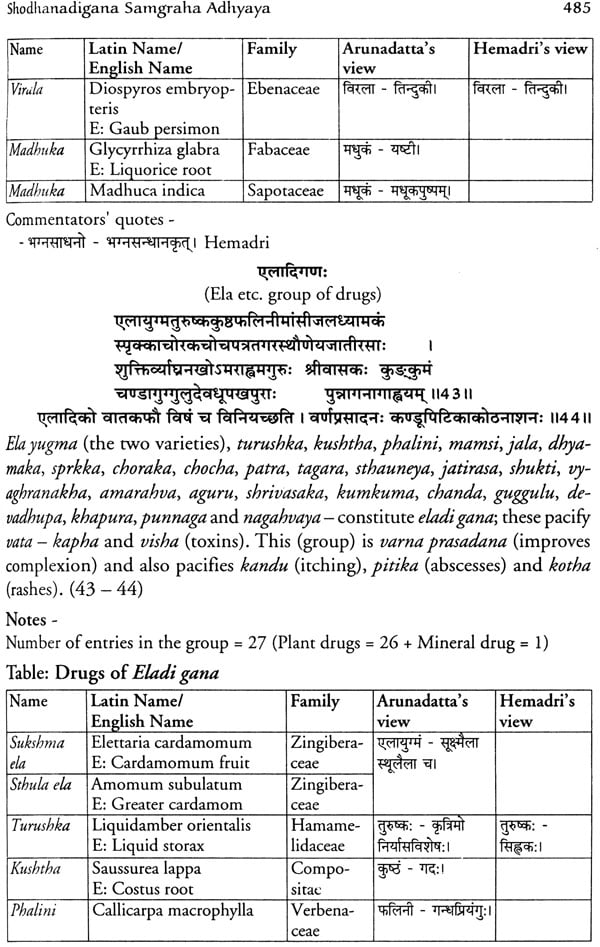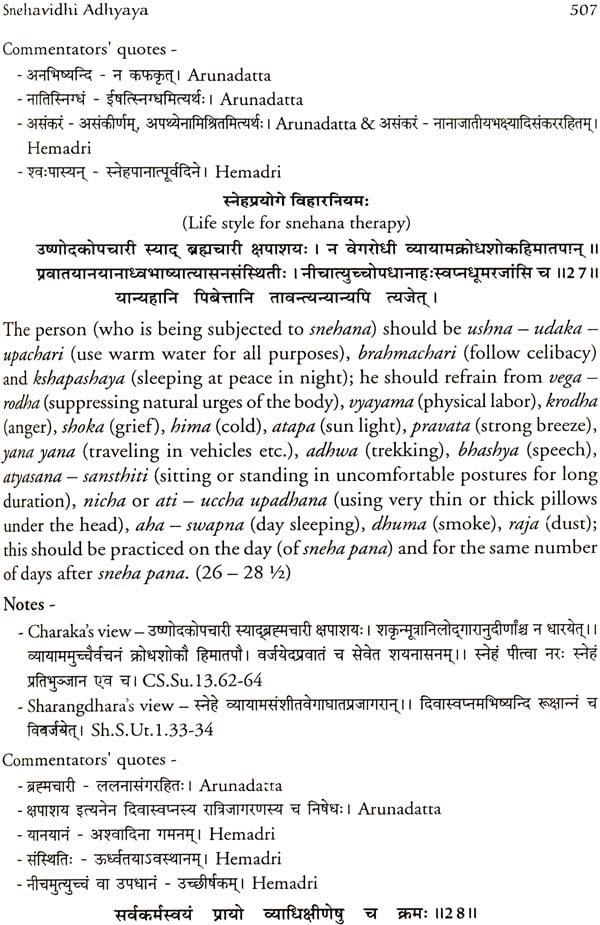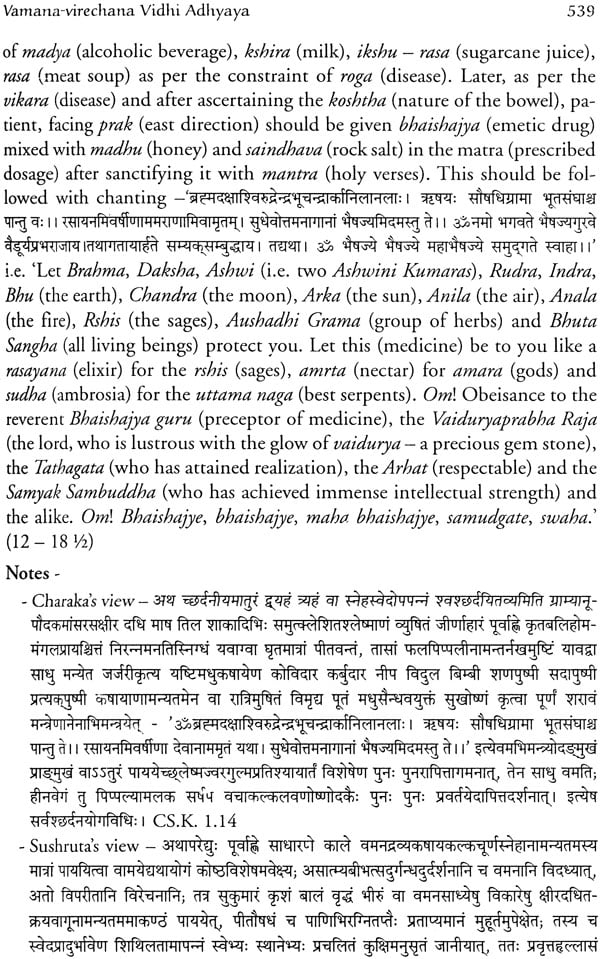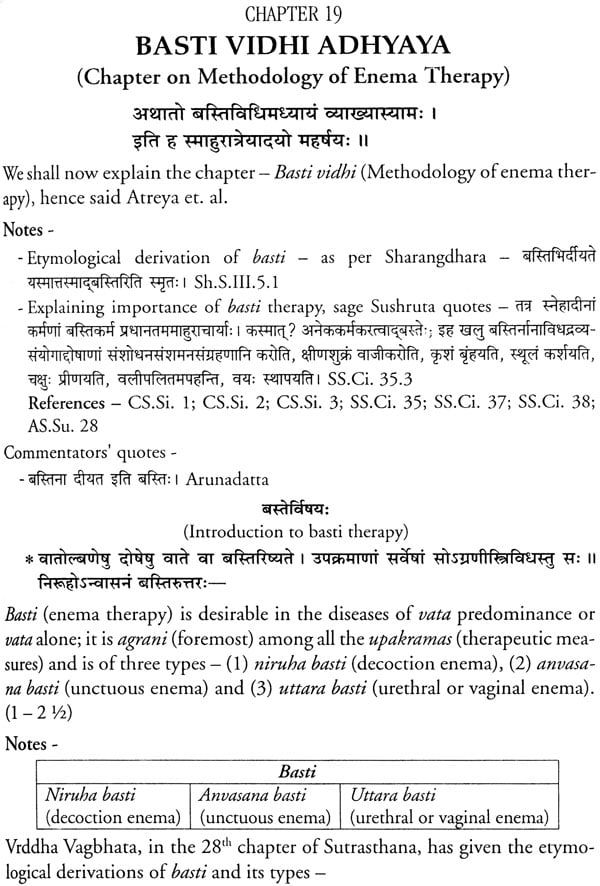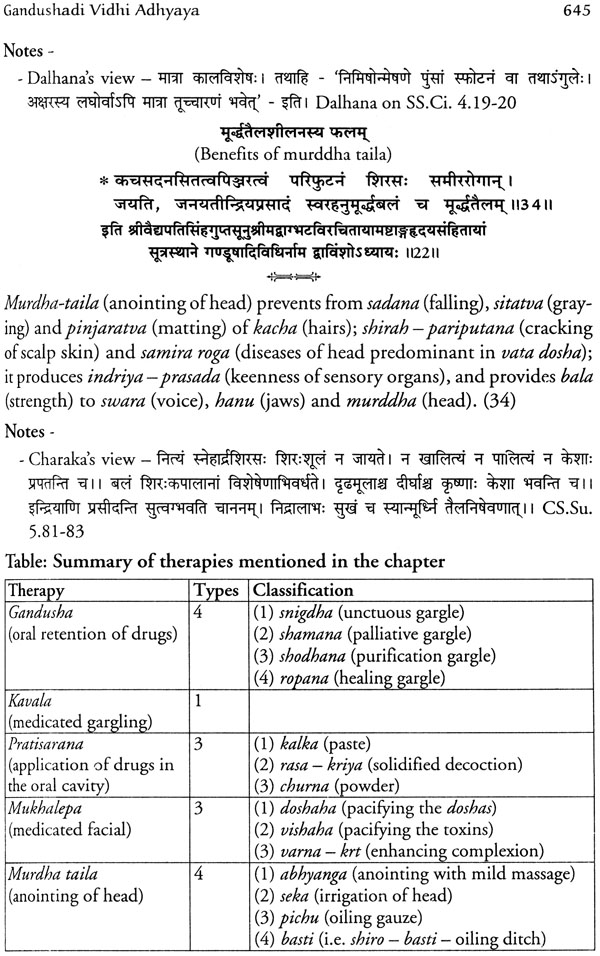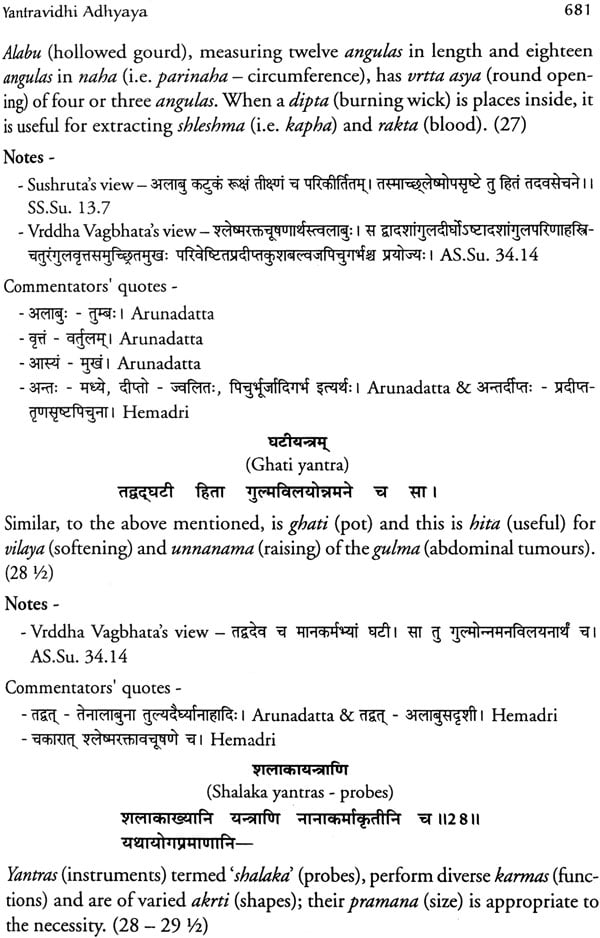
Astanga Hrdaya: Sutra-Sthana (Original Text with Authentic English Translation)
Book Specification
| Item Code: | NAH282 |
| Author: | Dr. Deepak Yadav ‘premchand’ |
| Publisher: | Chaukhamba Surbharati Prakashan |
| Edition: | 2014 |
| ISBN: | 9789383721108 |
| Pages: | 959 |
| Cover: | HARDCOVER |
| Other Details | 10 inch X 7 inch |
| Weight | 1.70 kg |
Book Description
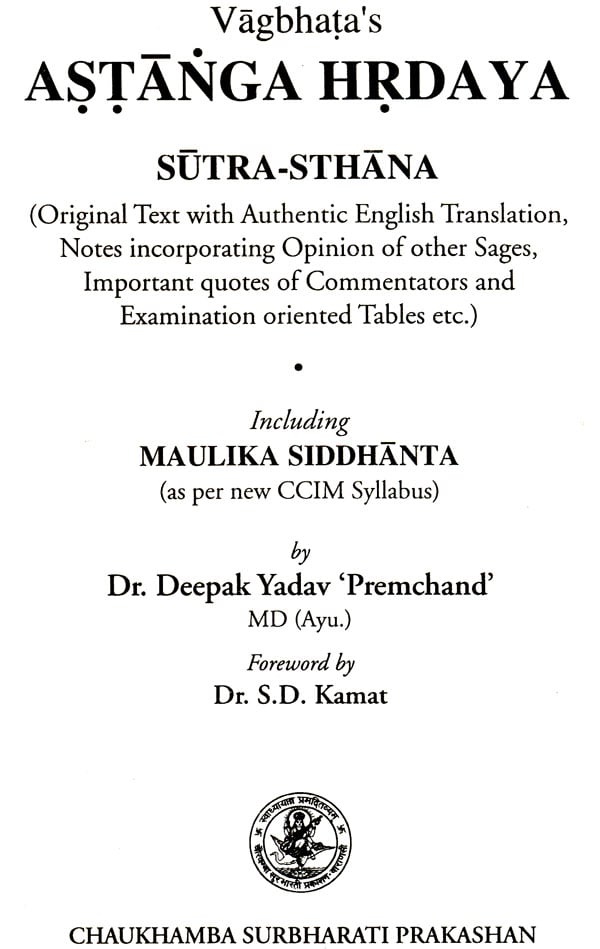
About the Book
The present day Ayurveda stands firmly on its literary pillars. These are the works of great Sages who dedicated their lives to the cause of the great science of life i.e. Ayurveda. Ashtanga Hrdayam (written by great Sage Vagbhata) is one such strong pillar. This work enjoys great popularity among the Ayurvedic fraternity and also with the general people of India. The subjects, in the work, are spread in one hundred and twenty chapters which are divided into six sections.
The first section (Sutrasthana) has thirty chapters in total. Explaining the meaning of word 'Sutrasthana' Vagbhata says - 'in this section of As h t an g a Hrdayam the subtle meanings (sukshma artha) of various topics are composed (sutrita)'. Among the six sections, Sutrasthana of Ashtanga Hrdayam is considered to be the best.
The present work is an English translation of the first section (Sutrasthana) with its original Sanskrit text. The translation includes maximum Sanskrit words (with their English meanings). Parallel references of both, Charaka Samhita and Sushruta Samhita (the two strong literary pillars of Ayurveda), are also provided in the notes after each Sanskrit shloka and its translation. At places, the quotes of other Ayurvedic classics such as Sharangdhara Samhita written by Sage Sharangdhara and Bhava Prakasha written by Sage Bhavamishra are also given. The important quotes of most popular commentaries on Ashtanga Hrdayam, Sarvanga Sundari (written by Sage Arunadatta) and Ayurved Rasayana (written by Hemadri), are provided after each shloka for easy comprehension of the classic. Many tables and charts, for summarizing various topics, are given after important topics. Useful appendices are added at the end of the book. This work will be useful for all those interested in getting acquainted with the scientific foundation of Ayurveda (the science of life).
About the Author
Dr. Deepak Yadav 'Premchand' M.D. (born on 24'h October, 1980 in Mumbai, Maharashtra) completed BAMS from Smt. KGMP Ayurvedic College, Mumbai in 2003 and MD (Basic Principles of Ayurveda) from Ayurveda College, Si on, Mumbai in 2007 under the guidance of Dr. Ganesh S. Puradkar. After Post- graduation, in 2008 he joined Veenavadini Ayurvedic College, Bhopal as a lecturer. Later in 2010, he joined Sushrutha Ayurvedic Medical College, Bangalore as a lecturer. In the year 2013, he joined Mandsaur Institute of Ayurvedic Education and Research, Mandsaur, MP as a Reader in the Dept. of Basic Principles of Ayurveda and continues till date. He has penned down more than 10 books on Ayurveda which are very popular with Ayurveda fraternity. He is actively involved in clinical practice, literary work and popularization of Ayurveda.

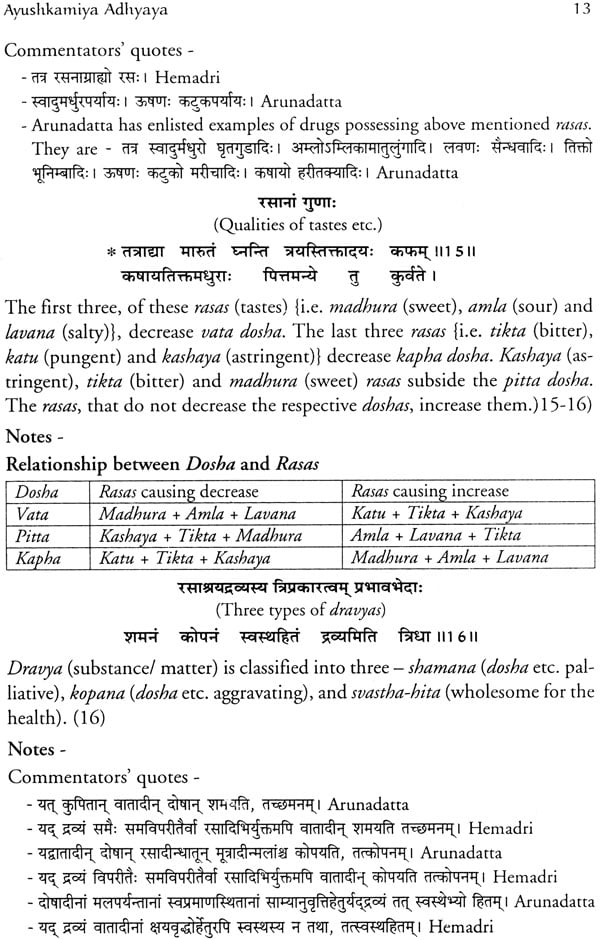
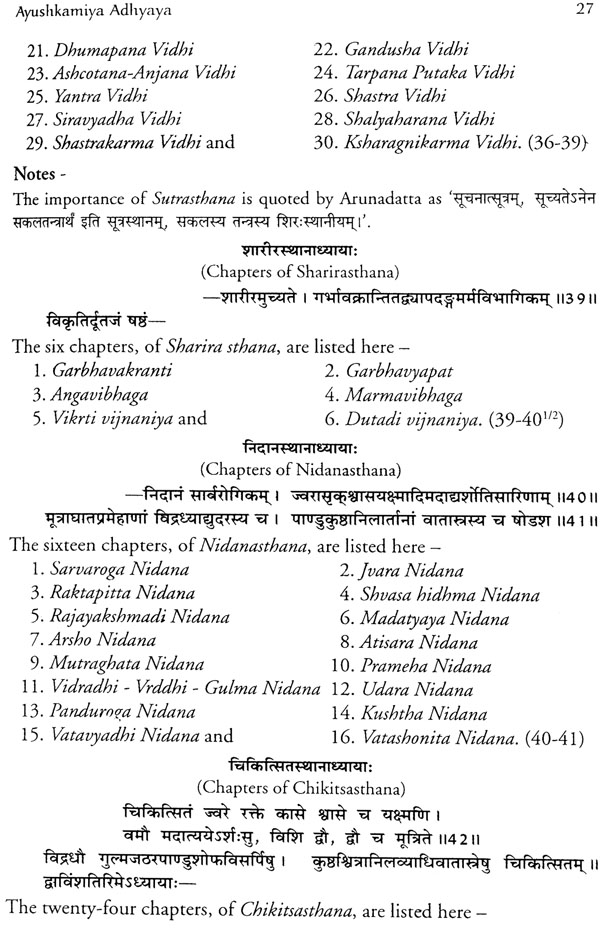
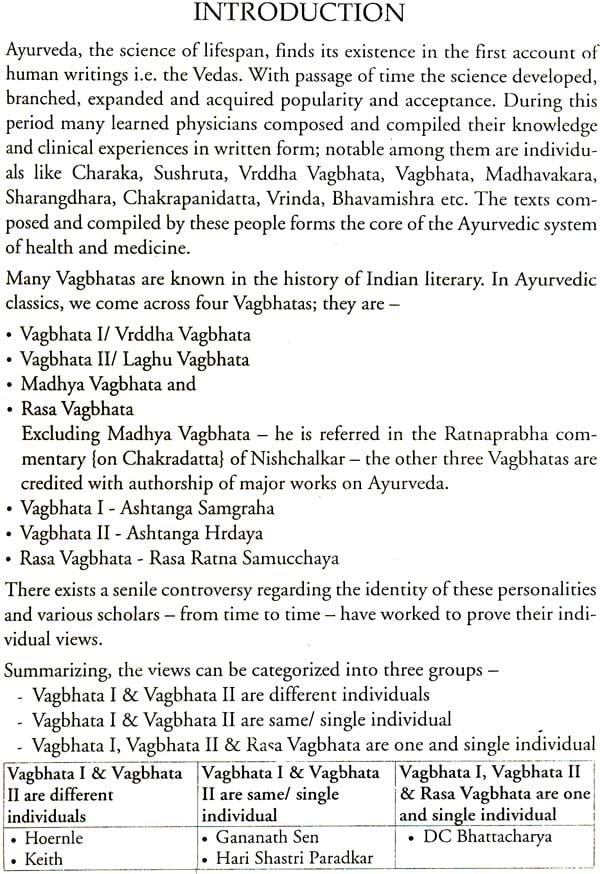
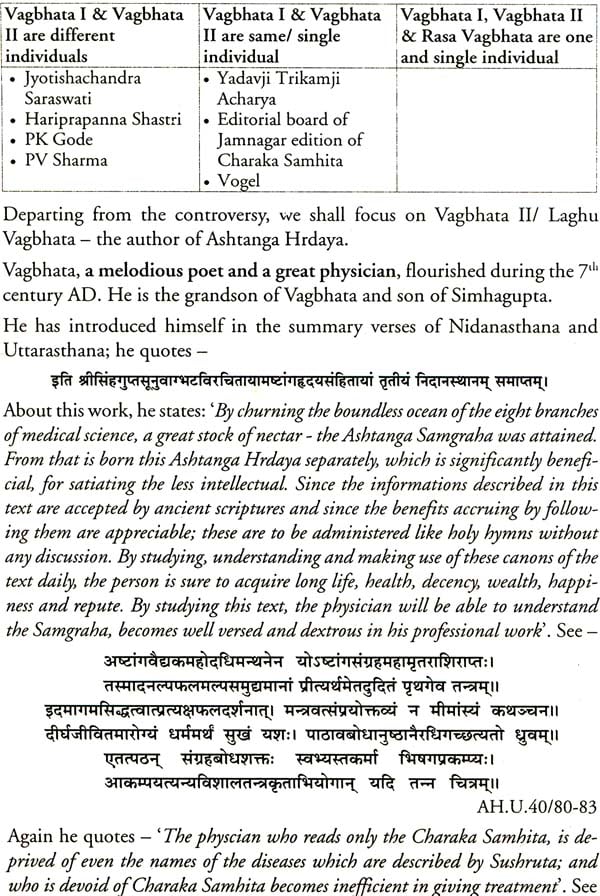

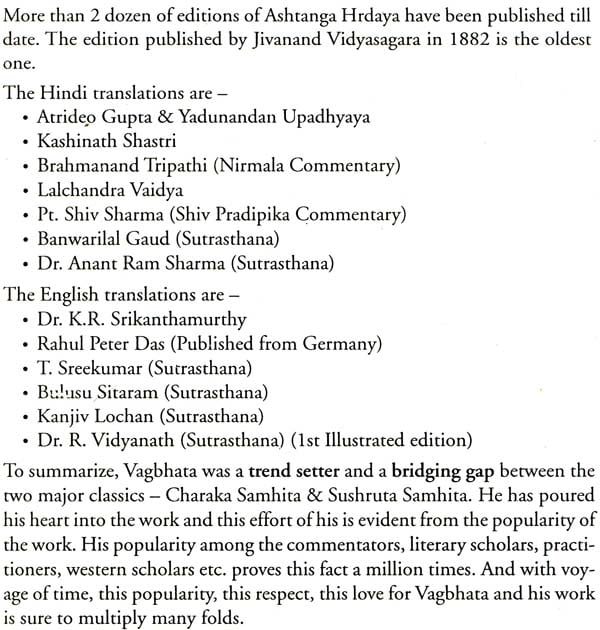
Contents
| Section 1 | ||
| 1. | Ayushkamiya (Desire for longevity) | 1-30 |
| 2. | Dinacharya (Daily Regimen) | 31-51 |
| 3. | Rtucharya (Regimen for Seasons) | 52-78 |
| 4. | Roganutpadaniya (Preventive aspects of diseases) | 79-100 |
| 5. | Drava-dravya vijnaniya (Science of Liquid Substances) | 101-149 |
| 6. | Annasvarupa vijnaniya (Science of nature of food articles) | 150-248 |
| 7. | Anna raksha adhyaya (Protection of food articles) | 249-282 |
| 8. | Matrashittiya (Partaking appropriate quantity of food) | 283-306 |
| 9. | Dravyadi vijnaniya (Knowledge of substances etc.) | 307-320 |
| 10. | Rasabhediya (Classification of tastes) | 321-352 |
| 11. | Doshadi vijnaniya (Science of doshas etc.) | 353-378 |
| 12. | Doshabhediya (Classification of doshas) | 379-415 |
| 13. | Doshopakramaniya (Management of doshas) | 416-431 |
| 14. | Dwi-vidhopakramaniya (Two-fold Treatment module) | 432-451 |
| 15. | Shodhanadi gana Samgraha (Groups of Shodhana etc. drugs) | 452-492 |
| Section 2 | ||
| 16. | Snehavidhi (Methodology of Unction therapy) | 493-516 |
| 17. | Swedavidhi (Methodology of sudation therapy) | 517-531 |
| 18. | Vamana-Virechana vidhi (Methodology of emesis and purgation theration therapies) | 532-558 |
| 19. | Basti vidhi (Methodology of enema therapy) | 559-595 |
| 20. | Nasya vidhi (Methodology of errhine therapy) | 596-615 |
| 21. | Dhumapana vidhi (Methodology of medicated smoking therapy) | 616-627 |
| 22. | Gandushadi vidhi (Methodology of oral retention of drugs etc. procedures) | 628-646 |
| 23. | Ashchotana-anjana vidhi (Methodology of Ophthalmic procedures) | 647-657 |
| 24. | Tarpana-putapaka vidhi (Methodology of eye soothing etc. therapies) | 658-668 |
| 25. | Yantra vidhi (Methodology of blunt instruments) | 669-691 |
| 26. | Shastra vidhi (Methodology of sharp instruments) | 692-717 |
| 27. | Siravyadha vidhi (Methodology of vene-puncturing) | 718-741 |
| 28. | Shalya-aharana vidhi (Removal of foreign body) | 742-764 |
| 29. | Shastrakarma vidhi (Methodology of surgical procedures) | 765-798 |
| 30. | Ksharagnikarma Vidhi Adhyaya (Chapter on Methodology of Caustric Alkali and Cauterization) | 797-817 |
| Appendix 1 : Alphabetical listing of shlokas | 821 | |
| Appendix 2 : List of medicinal plants mentioned in Ashtanga Hrdaya Sutrasthana (with referencces) | 844 | |
| Appendix 3 : List of Mineral drugs mentioned in Ashtanga Hrdaya Sutrasthana (with references) | 864 | |
| Appendix 4 : References | 865 | |
| Maulika Siddhanta of Ayurveda | ||
| Ashta Prakrti – Vivechana | 869 | |
| Tantra Yukti | 873 | |
| Tantra gunas | 895 | |
| Tantra doshas | 896 | |
| Tacchilya | 900 | |
| Arthashraya | 905 | |
| Kalpana | 913 |
